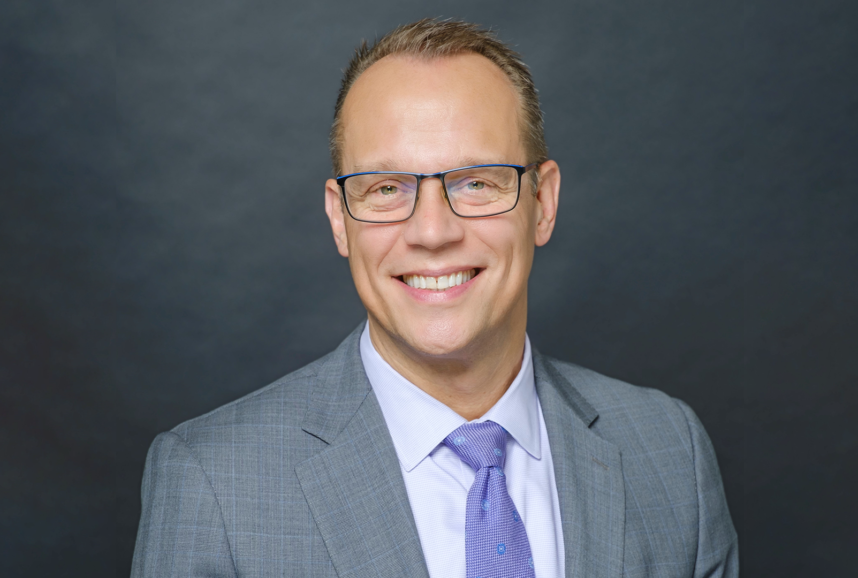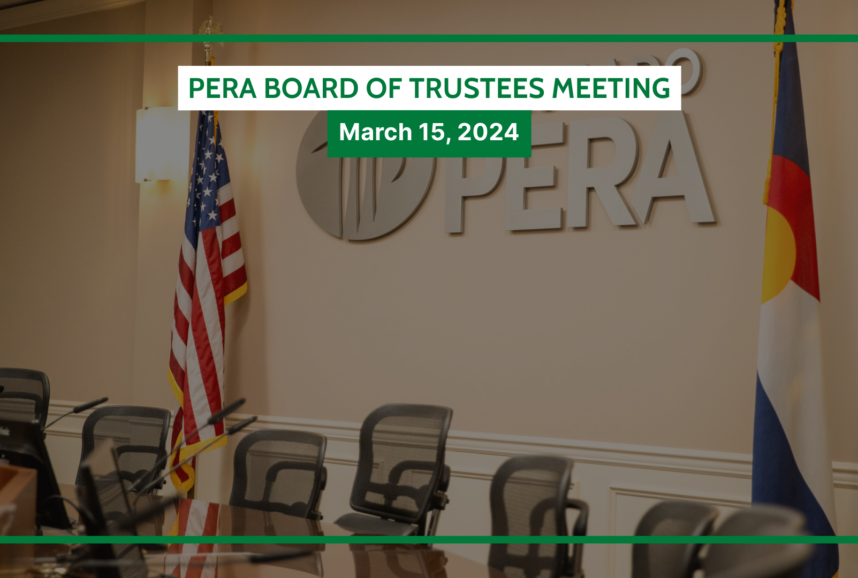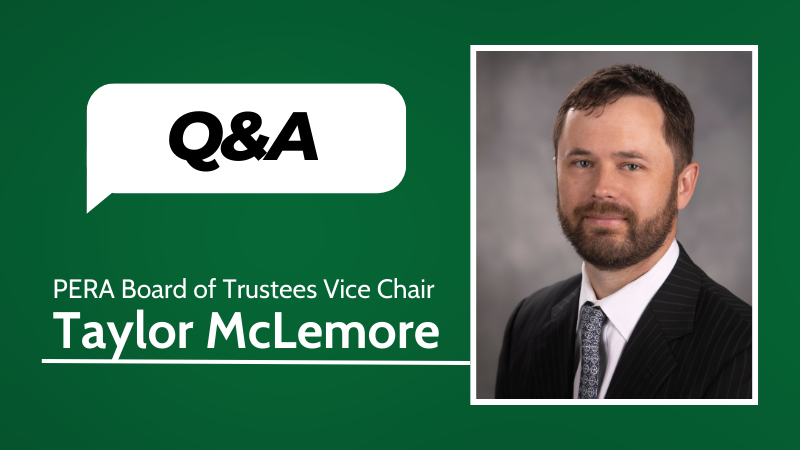The word “sustainability” is often used to define something environmental. Colorado PERA’s investment professionals see sustainability as a component of investment stewardship, encompassing another important component used when investing nearly $49 billion on behalf of PERA’s membership.
In June 2018, PERA’s investment team released the Colorado PERA stewardship Report, a comprehensive look at all the ways PERA incorporates the principles of ESG (environmental, social, and governance) stewardship to select, evaluate, and improve the PERA investment portfolio and strengthen the retirement fund.
In addition to environmental issues, the concept of global sustainability can encompass labor rights, executive oversight and corporate culture, and social impact, among many others. By examining how PERA’s investments may be exposed to these categories, PERA tries to identify which investments will provide the strongest long-term results for the fund, and thus for PERA’s members and retirees. “We don’t look one or two years down the road; we look 15 or 20 years, and concentrate on the long-term viability of a company’s business model” said Jared Goodman, a PERA senior equity portfolio manager. “We want to make sure our investments’ sustainability practices will drive strong long-term returns,” he added.
Making more sustainable and responsible investments has become a primary focus and concern for investors and investees alike in recent years. The number of sustainability-aligned investment strategies increased 14 times over between 1995 and 2016 as more consumers, corporate executives, and investors demanded them.
Organizations that deploy sustainability practices demonstrate considerable long-term productivity and resiliency. Consider the manufacturing firm that buys new equipment to meet its customers’ demand, produce lower carbon emissions, and provide a safer working environment for its employees. This firm is doing its part to protect air and water quality (and avoiding potential fines for environmental negligence) and increasing its workers’ safety and efficiency, all while enjoying the competitive edge the new equipment provides. Similarly, so-called “green” buildings have higher occupancy rates and lower energy costs, making them potentially strong long-term real estate investments.
Another way PERA’s investment stewardship focus helps improve performance is via corporate governance. The most direct way to do this is by influencing organizations, via engagement with their management and boards, to be more proactive in their ESG practices. Given that corporate fraud is estimated to cost the U.S. economy between $180 billion and $360 billion per year, there is ample need to ensure that corporate leadership is always acting in the best interests of its investors. By insisting on fair market practices, alignment between companies and their investors, and robust disclosure procedures, PERA can help promote changes and improve oversight in ways that can make these investments more successful in the long run. “We’ve always stressed corporate stewardship as part of our investment activities because it’s a sound strategy,” said Tara Stacy, a PERA investment compliance and performance analyst and a co-author of the Stewardship report. “This helps us get and stay ahead of the curve as these issues are increasingly highlighted,” she concluded.
For PERA, one more key piece of the stewardship puzzle is the contribution made to the state’s economy. In 2012, PERA introduced the Colorado Mile High Fund, which provides millions of dollars in investment opportunities for organizations that have a nexus to the Centennial State. (The entire PERA fund currently has more than $515 million invested in the state.) Colorado Mile High Fund investments are primarily private equity and venture capital investments, and they have produced encouraging results. As of December 31, 2017, PERA has sold three of six Colorado Mile High Fund investments since inception of the Fund, helping to achieve further gains for the total portfolio.
PERA will continue to evaluate opportunities for financial sustainability through the recognition of the importance investment stewardship makes to the goal of seeking the best risk-adjusted returns for the long-term sustainability of the Fund and the members PERA serves.
For further reading:
Colorado PERA stewardship Report
Investment stewardship Fact Sheet
StewardshipThe practice of overseeing or managing something entrusted to one’s care. PERA’s approach to investment stewardship is focused on ensuring the financial sustainability of the fund that pays benefits to retirees and beneficiaries.StewardshipThe practice of overseeing or managing something entrusted to one’s care. PERA’s approach to investment stewardship is focused on ensuring the financial sustainability of the fund that pays benefits to retirees and beneficiaries.StewardshipThe practice of overseeing or managing something entrusted to one’s care. PERA’s approach to investment stewardship is focused on ensuring the financial sustainability of the fund that pays benefits to retirees and beneficiaries.EsgAcronym for environmental, social, and corporate governance factors that can be used when making investment decisions.Private equityA type of investment in which investors purchase shares of a company that is not traded on a public stock exchange.





“Sustainability” is a pretty meaningless word when all PERA seems to be sustaining is their own job security and investment fees to Wall Street (with increasingly diminished returns and benefits accompany rising employee contributions).
Thank You…… if any contractual agreement made with PERA can be rescinded and reduced unilaterally, its not really “vested” at all. The conditions IN PLACE at the time of retirement must be honored, no matter what changes or adjustments made going forward must be implemented. The measure responsible management is MEETING obligations, not CHANGING obligations at will.
PERA you make an excellent case in defending what you have done with your equations, but in the process have left out other facts. Fact number one is that PERA has been underfunded by $4.5 billion not including the investment loss on this money. If PERA had this money now invested would the recommendation for retirees to have their annual increases reduced under the senate bill in 2010 and now again SB 200 in 2018 been brought up or even considered? What is being done about this shortfall? I’ve asked about this in the past, but I haven’t received any comments. Fact number two is that retirees were influenced by the information that PERA provided us with to base one’s retirement decisions accordingly. Does PERA admit or take any responsibility for that? I would certainly hope so. It appears that retirees are considered as an easy target. It’s certainly regretful that PERA states one thing, but does just the opposite. May I remind PERA of the guest commentary by Timothy M. O’Brian.
Without a COLA provision, PERA retirees would see a loss of about 32 percent of their anticipated retirement income. It is not just this loss of income that concerns the PERA board, but also the decline in retirees’ purchasing power, or their ability to purchase products with current monetary values. The value of any currency changes as inflation changes. Without the inflation protection a COLA provides, retirees would experience a 58 percent reduction in purchasing power over the 38-year period. The PERA board believes strongly that we cannot make such drastic cuts to our public servants’ retirement.
By TIMOTHY M. O’BRIEN | Guest Commentary
January 5, 2018 at 12:00 pm
We again are seeing drastic cuts! We don’t need to be reminded of the Colorado State Supreme Court decision. It doesn’t make a wrong right. We know now that PERA’S goal is to get all divisions 100% funded in thirty years or less. How are retirees supposed to recover from these cuts? It is hard for me to imagine that retirees are being penalized for living longer. I would think that PERA would look upon that favorably. With annual increases being cut and a lower standard of living maybe that will lower one’s life expectancy.
I live in Kentucky now and I have written both Senators and my congressman about the Windfall Elimination provision. The bill before the House and the Senate will probably not make it to the floor again for a vote. This happens every year. With our annual increases being reduced we need like never before to have the WEP repealed. One thing that PERA always informed us at the meetings was how we would be impacted from the WEP and the GPO provisions. Along with that information PERA informed us not to worry because our retirement benefit would be more than adequate. Considering full retirement and adequate annual increases one would have thought so. Not the situation that we face now!
Dear Mr. Clevenger,
In response to the questions you posed: The $225 million annual distribution from the State of Colorado begins to make up for the contribution deficiencies experienced in the past. The statement made by Board Chairman Timothy M. O’Brien was in response to proposals to completely eliminate the Annual Increase until PERA was better funded (80 to 100 percent funded) made before the 2018 legislative session began. The Board’s proposal contained a two-year suspension of the Annual Increase and then an Annual Increase capped at 1.5 percent. These recommendations were contained in the bill that passed the Legislature.